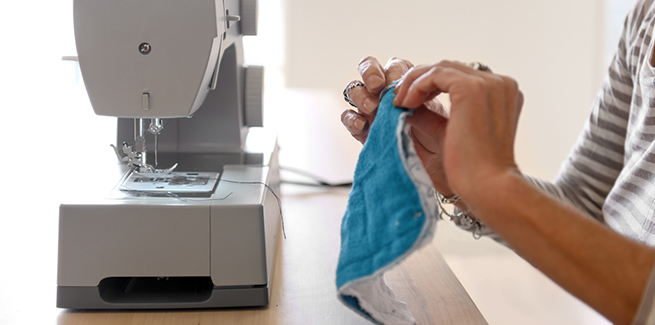N95 mask production ramping up, but you have options if you’re crafty and in a hurry

You already know that facemasks are in critically short supply.
That remains true even as companies like 3M, the makers of Scotch Tape and Post-it Notes, ramp up production of desperately needed N95 facemasks (the N95 designation comes from the masks’ ability to filter out 95% of large and small particles, including certain kinds of bacteria).
3M had already doubled global production to 1.1 billion per year from about 400 million per year, and now the company says it plans to double production again to 2 billion within 12 months. That’ll help, but it still falls short of the 3.5 billion N95 respirators needed in the event of a full-blown pandemic, according the US Department of Health and Human Services.
Although US health agencies have published strategies for conserving and reusing surgical masks, some health workers aren’t waiting around for businesses like 3M to come to their rescue, and a small DIY cottage industry has sprung up around making your own masks.
The latest DIY design comes from the University of Florida Health’s department of anesthesiology.
They developed two prototypes for DIY masks that meet N95 standards—masks that can be fashioned in large quantities using materials like surgical pack wraps already found in veterinary hospitals and medical facilities.
The UF design calls for Halyard H600 two-ply spun polypropylene that cannot be penetrated by water, bacteria, or particles. The mask blocks 99.9% of particulates, making the masks about 4% more effective at blocking particulate material than the N95 masks, according to Bruce Spiess, MD, a professor of anesthesiology in the University of Florida’s College of Medicine, who made that calculation based on the manufacturer’s specifications.
One prototype involves a three-pleat design that hugs the face from below the eyes to below the chin. The other involves a cone shape around the nose and the mouth. A wire is inserted so the mask will fit snugly around the nose. It has darts to snug the mask under the chin.
The UF posted complete instructions for making both, including a list of materials and how-to videos on their website.
UF says they’ve fit-tested both types, and are still refining the designs and assessing which works better for different types of faces. They’ll update that information as it changes.
UF is so confident in the efficacy of their design that they’ve applied for a patent, currently pending.
What we really need now is a DIY facemask design that doesn’t depend on having a plethora of surgical packs laying around—one made from, say, office supplies.
If only someone could figure out a way to make an N95 respirator out of Post-it notes. . . .
Photo credit: © iStock/lisegagne



